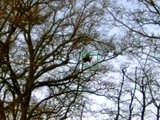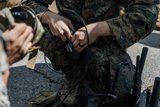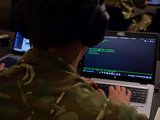Raytheon provides tactical networked communications in Indian military field demonstration
Raytheon Company has successfully proved its tactical networked communications capabilities using the Enhanced Position Location Reporting System-Extended Frequency-International (EPLRS-XF-I) during a second-phase field demonstration in support of India's modernization efforts.
System performance during the April 2010 demo was marked by a highly reliable 2-Mbps (millions of bits per second or megabits per second) - the first time this has been demonstrated with EPLRS internationally - across distances exceeding 30 km (18.6 miles), using stationary as well as mobile nodes. It provided for the simultaneous voice, video and data communication, yet in an easy-to-use, simplified architecture.
"Working with Precision Electronics Limited of Noida, India, we have shown Bharat Electronics Limited and the Indian Ministry of Defence that the EPLRS family of radios provides a tailored, low-risk netted communications solution to meet specific MoD requirements," said Brian McKeon, vice president, Raytheon Network Centric Systems Integrated Communications Systems.
The demonstration featured networked communications for a battlefield surveillance solution. The versatile communications unit supplied a secure, wireless network system in static and mobile operating environments where the network infrastructure did not initially exist.
EPLRS is one of the most widely used tactical wireless networks today, with more than 25,000 units fielded across the US armed services, Canada and Australia. The XF-I system uses the most advanced EPLRS waveform available for communications, critical position location information and effective electronic counter-countermeasures. It provides a robust, self-healing network that automatically adapts to network changes, including in difficult urban environments.
Source: Raytheon
More from Digital Battlespace
-
![Chess Dynamics successfully demonstrates Vision4ce AI-driven tracker]()
Chess Dynamics successfully demonstrates Vision4ce AI-driven tracker
The Vision4ce Deep Embedded Feature Tracking (DEFT) technology software is designed to process video and images by blending traditional computer vision with artificial intelligence (AI) algorithms to present actionable information from complex environments.
-
![Wave Relay devices cleared for security use on commercial systems in industry trend]()
Wave Relay devices cleared for security use on commercial systems in industry trend
Persistent Systems has been cleared by National Security Agency (NSA) to transmit sensitive data on commercial networks. The devices are added to the NSA’s Commercial Solutions for Classified (CSfC) component list which also includes other companies’ products providing the same security.
-
![UK teases cyber spending boost in Strategic Defence Review ahead of “imminent” release]()
UK teases cyber spending boost in Strategic Defence Review ahead of “imminent” release
The release of the UK’s Strategic Defence Review (SDR) has been long promised as mid-year. It is possible it could be as early as 2 June although the UK Ministry of Defence (MoD) continues to play its cards close to its chest.
-
![Intelsat emphasises SATCOM resilience for SOF in contested domains (video)]()
Intelsat emphasises SATCOM resilience for SOF in contested domains (video)
Intelsat outlines how its multi-orbit SATCOM architecture is enhancing connectivity and resilience for special operations forces operating in degraded and contested environments.
-
![US Space Force’s next-generation missile warning system moves forward with $500 million in new contracts]()
US Space Force’s next-generation missile warning system moves forward with $500 million in new contracts
Next-Generation Overhead Persistent Infrared (Next-Gen OPIR) satellites are intended to provide early warning of missile launches from any location worldwide and new ground stations will result in expanded coverage of critical missile warning.























